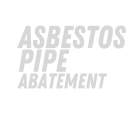The first step in salvaging pipelines involves a comprehensive assessment and inspection process. Advanced inspection technologies, such as inline inspection tools (often referred to as “smart pigs”), drones, and remote sensing techniques, are utilized to gather accurate data about the condition of the pipeline. This data includes measurements of corrosion, cracks, and deformations, which help engineers determine the extent of the damage and the areas that require immediate attention.
Salvaging the pipeline:
- Excavation and Replacement: In cases of extensive damage, sections of the pipeline may need to be excavated and replaced. This process involves cutting out the damaged section and welding in a new segment.
- Composite Sleeve Repair: For localized damage, composite sleeves can be used. These sleeves are wrapped around the damaged area, providing structural reinforcement and preventing further deterioration.
- Pipeline Cladding: Cladding involves applying a protective layer to the pipeline’s surface to enhance its resistance to corrosion and external forces.
- Cathodic Protection: This technique involves using sacrificial anodes or impressed current systems to protect the pipeline from corrosion by creating an electrochemical barrier.
Salvaging pipelines requires careful consideration of environmental impacts. Measures must be taken to contain the spill from leaks or ruptures and prevent it from causing further harm to ecosystems and communities. Remediation efforts may involve soil and water cleanup, wildlife protection, and community engagement to ensure that the restoration process minimizes its ecological footprint.
Safety is paramount during pipeline salvage operations. Strict protocols are followed to protect workers, nearby communities, and the environment. This includes implementing proper ventilation systems, personal protective equipment (PPE), and adherence to industry regulations and guidelines.
Modern technology plays a vital role in salvaging pipelines. Remote-operated vehicles (ROVs) equipped with cameras and sensors can navigate through pipelines to assess damage and carry out repairs in challenging environments. Additionally, data analytics and artificial intelligence are used to analyze inspection data and predict potential weak points in pipelines, enabling proactive maintenance.
After the salvage and restoration process is complete, continuous monitoring and maintenance are essential to ensure the long-term integrity of the pipeline. Regular inspections, corrosion monitoring, and data analysis help detect any emerging issues and allow for timely interventions before major damage occurs.
Salvaging pipelines is a multifaceted process that demands a combination of technical expertise, advanced tools, and environmental consciousness. By employing innovative technologies and adhering to strict safety and environmental standards, engineers and professionals can effectively salvage pipelines, extending their lifespan and contributing to the reliability of our vital infrastructure. As technology continues to evolve, the industry will be better equipped to address pipeline challenges and maintain the integrity of these essential conduits.
Contact us today for all your pipeline salvaging needs.














